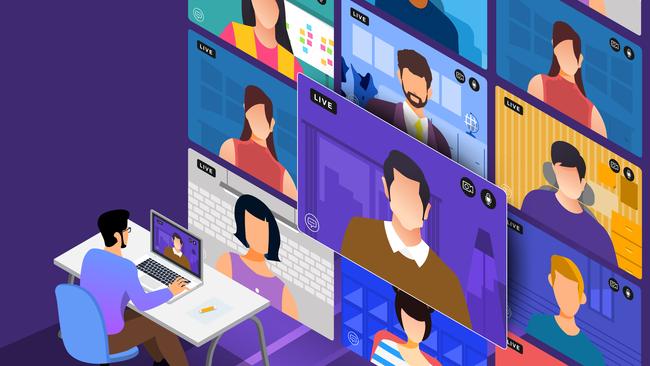So that was the year that was

It’s easy to take for granted the degree to which technology kept many of us in jobs and able to work. If COVID-19 had hit in the 1990s, for example, or perhaps even the early 2000s, the technology to support working from home simply didn’t exist. Zoom calls are only possible thanks to broadband internet connections, and we now work with emails and Slack channels at unprecedented pace, sometimes to our own detriment. Imagine if we had to use our dial-up modem to connect to the internet, and then load web pages at a snail’s pace before we could start getting any work done? Or texting our colleagues using an old Nokia, rather than the efficient group chats we have today. Thankfully, a lot of the infrastructure underpinning remote work already existed in 2020, we just were forced to use it and rely on it in a way we would never have predicted. That shift was already underway, it’s just happened far sooner than it was going to.
The pandemic has permanently up-ended many traditional barriers to work, such as commuting for example. Knowledge workers now have a choice of working for a company situated anywhere around the country or the world if they wish, rather than being tied to working within a couple of hours’ radius of home. This shifts the balance of power towards the worker, who will be able to broaden their horizons when choosing who to work for.
For people who already live regionally and commute an hour or two each way per day, the ability to work from home even a day or two per week will have enormous benefits, both financial and mental. Commute time is still essentially dead time — until we get fully driverless cars that will free us up to be more productive — so a couple of extra hours a week will do wonders for productivity. Productivity has also been helped by less distracting office conversations, though I didn’t realise how much I took for granted inane colleague catch-ups about US basketball and politics.
Remote work — at least sans kids and pets — has allowed for a focus that’s not possible in a bustling office environment. We’ve been just as, or even more, productive than we could’ve imagined during a crippling global pandemic.
There have been challenges and things to keep a watch on. All that productivity comes at a cost. The lines between work and home have become more blurred than ever, just as our phones — and smartwatches, iPads and even now our TVs and refrigerators — have become better at commanding our attention and sending us constant notifications. It’s becoming increasingly socially acceptable to send and receive work emails at 11pm at night, or on weekends, and, as workers, we’ll need to be strong in setting boundaries and out-of-office auto replies. Executives have also toyed with how to best monitor their workers, including experimenting with invasive software that tracks their employees’ computers remotely, and knows what they’re doing at all times. It’ll be up to workers to know what they’re comfortable with and push back where necessary.
And as the pandemic shutdown large swathes of our economy, it demonstrated that we need to be smarter at utilising our entire workforce. Rather than pay people to sit at home because their bar or cafe is closed for example, how can we best use every individual’s skills and give them “something” to do? Obviously not everyone is going to be suited for knowledge work from home, for example, but the pandemic will hopefully precipitate a broader conversation around what work should look like, how we reward it, and how we can maximise participation. The concept of a universal basic income has been criticised for being unworkable and pie in the sky, but the Coalition government’s JobSeeker and JobKeeper welfare payments weren’t too far removed from it. Technology has enabled completely new ways of working, so we’d be silly not to take advantage of that and be smarter about how we best use our workforce.
This has been a year like no other, and the pandemic has allowed tech to shape our life in profound ways, many of which we can’t comprehend yet. It’s on everyone — workers and their bosses alike, as well as tech companies themselves — to ensure that lasting change is for the better, and that we hold onto the pronounced advantages that technology has helped engineer.



In a wildly unpredictable year, full of twists and turns of all sorts, there is broad consensus among executives about at least one thing. The pandemic meant years’ worth of progress in remote and flexible work happened in just a couple of months. That’s a shift that will stick around long after a COVID vaccine has been deployed and the virus eradicated.